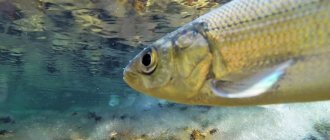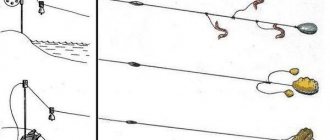How to properly pick up fish with your hands
I read a news story here about a frog that a fisherman found in a fish he caught.
The little frog turned out to be alive and jumped away immediately after the fisherman took the photo. But something else interested me. At the end of the article it says:
“The photo, published on the page of Reptiles magazine, instantly became popular. The photo posted on May 3 was “liked” by almost 80 thousand people, about 45 thousand more posted it on their pages, and the number of comments exceeded four thousand. In them, users are touched by the frog, and also thank Angus James for his humanism - after he took the photo, the fish was released back into the water .”
I wondered whether the released fish would survive. Especially, caught on a hook, and even spent some time in the air, in the hands of a person. We were told, for example, that on Ponoi many foreign fishermen like to show humanism and release the fish, after which after some time it floats up belly up somewhere downstream.
Local experts told us that this is a whim - it’s better to eat the fish you catch, and that’s even more beneficial.
Here's what I found on the topic:
“There have been numerous scientific studies of fish survival after release in the United States. It has been proven that the mortality rate of trout after being caught on sports gear can range from 5 to 25%. The survival of a fish depends primarily on the type of gear it is caught on. Using the appropriate size barbless single hook greatly increases the percentage of fish that successfully survive the stress of fishing. On the contrary, fishing with multi-hook spinning lures and natural baits dramatically increases mortality, both immediately after release into the water and over the following weeks.”
“When fishing, the fish gets injured, loses strength when fishing, gets burned with its hands and loses its mucous membrane - its only protection against fungi. And in general, a fish is an extremely fragile creature; Once she takes the bait, she is doomed. Therefore, whoever releases a fish destroys it.”
However, they write that releasing fish can be useful if you know how to do it. And in any case, they say, even if 25% die, then 75% of the fish will still survive after being released. And if you follow certain rules, the survival rate can reach up to 100%.
In order to achieve the survival of caught fish, you need to understand the reasons why the caught fish may die.
- Hook wound. It is impossible to completely avoid this damage, but it is possible to minimize this damage, see below.
- Damage to the mucous membrane. Many fishermen who release caught fish are convinced that if now before their eyes a fish swims away alive, then it will not die, but if you take the fish with dry hands, take it into a landing net with the wrong mesh, put it on dry grass, this fish will swim away, but the damage mucous membranes lead to infectious diseases that develop within 2-3 weeks and lead to the death of the fish. Damage to the mucous membrane is especially dangerous for bream, pike, crucian carp, chub, and roach.
- Damage to cartilage and soft tissue. These damages occur when the clutch is incorrectly adjusted, the gear does not match the fishing conditions, and when the fish hits rocks.
- Bleeding. If the hook hits the fish in the gills, it is dead. If, when taking a fish out of the water, an angler grabs the fish by the gills, it is dead. How not to grab a fish by the gills is understandable, but how to prevent swallowing a hook is a science.
Now I will describe in detail all the rules that a fisherman who wants to learn how to save the life of a caught fish must follow.
The fisherman must have the necessary knowledge and skills to prevent fish from swallowing bait or bait:
How to prevent the bait from being swallowed? In spinning, this is not entirely simple, it is skill + perfection of the tackle, the spinner must choose a bait, a hook of adequate size, the bigger the bait, the better, there is one hook, single, without a barb, so there is a greater chance that when hooking, the hook will dig into the edge of the lip and not deep in the mouth. In a float fishing rod it is simpler - the length of the leash and the sensitivity of the tackle determines whether the angler sees the START of a bite, or whether his tackle is so rough that it shows bites only when the fish is already swimming to the side with the bait swallowed. Learn to fish the way sports fishermen fish.
The angler should use a fine mesh landing net:
It is important to exclude or minimize damage to the mucous membrane of the fish; for this you need a fine-mesh landing net made of soft, knotless mesh.
The angler should use one single hook with a pinched or sawed barb;
It is clear that tees are often used in spinning and fly fishing, and when we go on a two-week expedition to catch one trophy fish, we would rather choose a tee than a single hook, but if the task of keeping the fish alive is your first priority, then the hook should be single. The number of hooks is not discussed; if there is more than one hook on your artificial bait or on the rigging of your float or bottom fishing rod, this is incorrect fishing. The same applies to the number of gears; if you have more than one gear in the water, you increase the chance of being late with the hook and the fish swallowing the hook.
It is prohibited to use a cage or any other container for temporary storage of fish, including special carp cages and carp bags;
The fish must be released immediately after being released from the hook; keeping the fish in the surf zone, often in too warm water, reduces the chances of survival of the fish.
Contact of the fish with the ground, grass, leaves, etc. is not allowed; it is prohibited to handle the fish with dry hands;
Damage to the mucous membrane + thermal shock. The fish is very sensitive to temperature differences of several degrees, and if you pick it up from cold water, it will burn and die within a few days.
Releasing the fish from the hook should be done directly in the landing net; when purposefully catching large carp, it is permissible to use a special mat pre-moistened with water;
To free the fish, it is important that it does not fight, causing additional damage to itself. The safest thing for the fish is to release it in the shallows without removing it from the landing net. If the fish is large, you need to place the fish on its stomach and carefully release it from the hook.
When fishing with a float or bottom fishing rod, hook size is No. 14-6 according to the international classification. leader diameter 0.14-0.20mm, or 8-15 Lb test when using braided leader material;
This requirement applies to fishing for peaceful fish with a float or bottom fishing rod in central Russia.
The fish should be released immediately after being released from the hook;
Of course, you can take a photo with the fish, but be sure to keep the fish in or above the water. Predatory fish can only be caught with artificial bait (fly, spoon, wobbler, jig) with one single barbless hook. Fishing with live bait or dead fish is incompatible with the concept of “catch and release”.
Resuscitation:
Releasing a fish does not mean throwing it into the water. After being released from the hook, the fish is often exhausted and cannot swim on its own; it must be resuscitated. To do this, hold the fish by the tail; if in the current, then head against the current. Using smooth movements back and forth, we create a flow of water through the gill covers, which helps the fish come to its senses. The fish should break out of your hands on its own. Resuscitation can take up to 30-40 minutes.
By the way, do you release the fish yourself? How do you feel about this “fun”?
Catfish with bare hands
Carefully creep up to a catfish dozing off near the shore and hit it on the head with all your might. The catfish wakes up and, turning around, hits you in the stomach with its tail. You rise from the ground and, without shaking yourself off, kick the catfish in the ribs with your foot. Jumping up, he bites your hand, and you roll along the shore, grabbing the catfish under the gills, and carefully strangling it...
Agree that the scene described above is somewhat outdated. They have been catching catfish with a twister for a long time. A few years ago in one of the magazines I read about which spinning rod is the best for catfish. And not only the spinning rod, but also the reel and everything. Naturally, I tried everything inside and out and was stunned. First of all, I was stunned by the spinning rod. A spinning rod with a test weight of 10–60 is rather weak for catching catfish. Yes, you probably need a universal spinning rod so that you can also catch pike perch with it. But then a catfish bites, so what? If the catfish weighs about one hundred kilograms, then it takes at least an hour to pull it out with this spinning rod (10–60). Moreover, most of this time the spinning rod does not work - it does not have enough power to tear the fish off the bottom.
When I tried another spinning rod with a test of 60–100, I ended up pulling out exactly the same catfish twice as fast, in thirty minutes. And this spinning rod (60–100) is also quite universal. You feel everything with it: touching the bottom, pike perch are caught without problems, and the casting range is excellent. Nothing worked out for me with spinning clubs weighing up to 200 and 300 grams. I really wanted to hook the catfish with them to tickle his tonsils, but it didn’t work out. It is simply impossible to cast with them. I put them aside for trolling. Or here’s a short – 240 cm – spinning rod, with dough up to 80 grams. He disappointed me too. I need 3 meters long. It is believed that there will be a short spinning rod in the boat - someone probably dreamed about this topic. But even a no brainer is clear that it is easier to throw heavy loads with a powerful three-meter spinning rod, and during retrieval, such a spinning rod handles all jerks better than a short one. Based on the combination of qualities, a spinning rod for catching catfish with a twister should not be short. You get used to spinning over time. Catching catfish is like that – it takes longer to get used to it.
Coil. I myself used to catch catfish with a small reel. But it was bad. The small spool barely held enough meters of strong cord. There is also, accordingly, a problem with the casting range. I can't sacrifice casting distance, that's my thing. And a thick cord - without it it’s better not to think about catfish. That is why the reel cannot be of sizes “2500” and “3000”. This reel is not for catfish. I don’t take multipliers into account, since I don’t fish with them and don’t intend to relearn them. This margin of safety and reliability, which is built into the multiplier, is simply not needed. Essentially, the reel itself plays a secondary role in pulling out catfish; the friction is adjusted along the way, and everything else is decided by the power of the spinning rod and the reliability of the cord. I have never seen such a thing where the reel would fall into pieces while pulling out the catfish. If she is destined to break, she would rather die before she does.
The spool of a catfish reel must hold at least 200 meters of 30lb line. Reels that meet this requirement are not that bulky or heavy. One such reel for all occasions - pike perch, pike and, including catfish. It's comfortable. Thick braided cord and nothing else. It is strictly forbidden to use a cord weaker than 30 lb. Only until the moment the catfish bites can one assume that over time one can tire him out on a thin fishing line. Move it around for three or four hours, and it will float up on its own. But it won’t come up, this doesn’t happen. And it seems that 20 lb braided line is not for children, and if a catfish bites up to fifty to sixty kilograms, everything will probably work out. What if he bites a hundred kilograms? Then, of course, there are no options. 30 lb is the bare minimum. Fat? But the twister is not a wobbler, there are no problems deepening it, as you understand. And to feel absolutely confident, then you need to use a 50 lb cord. In most cases this is what I use.
However, here are the reasons why fishing with thick lines is difficult: casting distance, windage and problems on the hooks. In order for the casting range to be at the level, the cord must be round and relatively rigid, not fluffy, and therefore not absorb water and not freeze. Manipulations with increasing or decreasing the weight of the load solve the problem of windage, naturally, coupled with where to stand and how to cast. But perhaps the biggest inconvenience of thick cords is the snags. The 30 lb cord, when it is new, breaks with great difficulty, however, after a while it frays and no problems arise. But the 50 lb cord, when it is new, lifts a heavy boat from the anchor on the hook. With this cord on the hooks I cry bitter tears. So what to do!
I return to the freezing of the cord and not by accident. Catfish are often caught using a twister in late autumn, winter and early spring, when the thermometer is minus. Several years ago, at the end of March, at the very time when the catfish were biting, the temperature remained at minus 8–10 for several days. The 30 lb fishing line was old and froze heavily. 50 lb was fresh, but it is thick, and a thick line without lubrication does not fly in the cold. Regarding lubricants, everything is very clear today. Firstly, some do not lubricate, but this can only be done with thin fishing lines. Thick ones lubricate and almost certainly not with what you thought. I am regularly amazed by Vaseline oil - so much is written about it. But among my friends there is no one who would use it for other purposes, so to speak. And none of them use silicone grease. Oleg Kapitanov recommends “blue Shimanov lubricant” (aerosol) intended for reels. And this is on topic! It turns out that everything is very simple - well done, Oleg.
They write that the load for catching catfish should be heavy. Logical, damn it! In the conditions in which you have to fish differently, with light loads, there is nothing to do. However, how much is a heavy load? How much does it weigh in grams? Here is a very simple answer to this question. On current: depths up to 5m – 40g, up to 10m – 50g, up to 15m – 60g, up to 20m – 70g, up to 25m – 80g. Without current: up to 10m - 30g, up to 15m - 40g, up to 20m - 50g, up to 25m - 60g. But at the same time: with a moderate side wind you can safely increase the weight of the load by half, and in a strong wind - doubled. By the way, it's a great idea to connect two or three weights instead of using one heavy one. Naturally, all these figures are approximate. Everything in place may turn upside down. The only thing you shouldn’t worry about is that with a heavy load there are fewer bites. First of all, this is a completely different fishing experience. Bites are not counted in it. The prevailing opinion that the load must be selected in such a way that the wiring is done on the verge of perception does not apply to catfish. With the same success, you can transfer other techniques from catching perches and dwarf pike to catfishing. That's bullshit.
The hook is only a tee. Only good. How well polished is it? This becomes clear at the moment of the bite. Even with perfectly sharpened hooks, mishaps, of course, are not excluded. Meetings in catfish fishing are a frequent occurrence. My friends have been successfully catching catfish with a spinning rod for a long time, and they all have sharpening machines at home. They take a strong 3/0 tee, like those called “strong”, “2 strong”, etc., and sharpen them, some into three edges, some into four. Some people sharpen it so cunningly that they don’t show it to anyone. And those who sharpen have very few gatherings.
In order not to make mistakes by picking up nonsense from articles about catching catfish with a spinning rod, it would be more useful to read about what sooner or later baffles everyone when a catfish bites for the first time. But they don’t write about this at all. For example, for many, it is a real difficulty to conduct wiring at depth and in strong currents. After all, if you do it wrong, the catfish won’t even think about biting. Increasing the weight of the load may not bring the desired result. Before making a Cast, you need to correctly stand in place, on the edge. The current swirls above any river edge, and guiding along this swirl can be done easily. It’s better to stand on the lower edge, it will be even easier. It's rare to get it to anchor correctly the first time. You have to be careful, careful, and pay attention to how the foam moves across the surface of the water. And in general, there are a lot of tricks here.
What about the Wiring itself? Is there a special catfish wiring? Of course not. The wiring is normal: two or three turns, a pause. As for the unusual, all sorts of twitching and dotted wiring, then this is not necessary. And although I have no idea what dotted wiring is, I suspect that this is nonsense not made up on a sober head. Somewhere else I read from the same opera that the fish should be hooked twice. You can hook, if your crazy head doesn’t give you rest, you can do it three times. Come on, whatever it is, hook it. Seriously, the catfish does everything on its own, it is big and heavy, you don’t have to hook it even once.
Pulling out catfish is a serious problem for most spinners. But for the most part, they create it for themselves. It’s funny to watch how a spinner holds on to a spinning rod bent into an arc and waits for something. What is he waiting for? Surfacing? This way there will be no ascent as long as it holds on. The catfish must be dragged, straining the tackle. Not like dragging a pike or a bass. In catfish, the catfish weighs more than any perch. When someone is dragging a catfish in a boat with me, I get tired of repeating to him: “It’s good to hold on to it, pull it out already!” At the moment when the catfish is under the boat, you should not start the engine: sometimes this makes a strong impression on the catfish. As for hooks and landing nets, oddly enough, I often come across cases when catfish are caught with a large landing net. For what? A pair of gloves is enough, and if the catfish weighs up to 80 kg, then I can drag it into the boat alone and with just the help of that same pair of gloves.
In what cases is it necessary to remove the anchor while retrieving a catfish? I would not touch the anchor if possible. There have been too many cases when catfish took advantage of this to go into shelter and become hopelessly stuck there. But on the other hand, there are times when there is too little line left on the spool to reliably stay in place. Then you need to take off, quickly approach the catfish and anchor again. There are also cases when a catfish accidentally gets caught by the tail or, even worse, across it - then it is almost impossible to pull it out against the current. In this case, having lifted the anchor and approached the catfish, you no longer need to anchor. But, however, not everyone can determine that the catfish is stained, and this is important. If a catfish pecked in the immediate vicinity of a snagged shore, it also makes sense, as soon as it became clear that it was a catfish, to weigh anchor, take the boat in the direction opposite to the snags, anchor and drag the catfish “into an open field.” In some cases, he does not immediately rush into the snags, that is, he does not feel threatened, and therefore there is time and a chance. But in other cases you can’t weigh anchor if you don’t want to lose the catfish. He will take the fishing line, sometimes many meters, but this is nonsense. If the catfish does not immediately fit into any snags, then this means that you already have an advantage over it at the place where you are anchored. Don't deprive yourself of this pleasure!
MAXIM EKIN January 18, 2006 at 00:00
How to properly pick up fish with your hands
Pulling a pike out of the water. If the hook is stuck in your hand.
In the last article we looked at the process of fishing for pike. Let's move on to the important process of pulling the pike out of the water.
When the pike is tired enough and has stopped making periodic jerks and jumping out of the water, that is, making a “candle”, it is time to pull it out. Small pike can be lifted into the boat by being grabbed firmly behind the gills. Many people believe that this method of pulling out is also suitable for larger pikes, but I would not recommend it: it is much easier and more reliable to use a large landing net or hook.
It will be somewhat difficult to reliably take a large pike, firstly, since it is slippery, it can easily escape by jerking its body, and secondly, it is not safe; if it escapes from the hand during a jerk, the pike can easily stick loose hooks into the hand, for example, a wobbler. And in my memory there are a lot of such cases, including mine.
If this does happen, that is, the hook is deeply embedded in the palm, then you need to have great endurance to pull it out of there, unless, of course, there is a first-aid post nearby. It's best to do this together. But I had to do it alone. First, calm down. In any case, you are already guaranteed a bruise. Cut the fishing line with bait from the spinning rod. If you are in a boat, try to land on the shore; there is no rocking there. Prepare a first aid kit with a plaster, bandage, disinfectant (iodine, hydrogen peroxide).
If the hook is stuck tangentially, you can bite it off with wire cutters and drag it further along the movement, piercing the skin in another place. This is the easiest case. If the hook has gone deep, then biting it off is pointless. You need to pull yourself together and hold the hook tightly with pliers and pull it out in one sharp movement. Yes! It's cruel! So what to do? The nearest medical center can be tens of kilometers away. The main thing is not to pull, but one sharp and strong jerk. A weak tug will not work; the barb of the hook securely fixes it under the skin.
But enough about the sad things, although it is better to know about this in advance and try to avoid such situations.
Pike weighing up to 4-5 kilograms can be pulled out with a large and capacious landing net. It's best to keep the net underwater so you can quickly raise it when the pike you're fishing is right above it. Trying to move the net towards the pike instead is very risky, because it will become frightened, and then the hooks will most likely get stuck in the loops of the net, and the pike will be free. So lead the pike to the landing net, and not vice versa!
In my opinion, the hook is one of the best tools for pulling out prey. When the pike approaches the shore or boat, the hook of the hook is inserted under the lower jaw, simultaneously lifting the fish. If you place the hook in front of the lower jaw, just behind the jaw bone, where the skin is thin, almost no harm will be done to the fish, and it can, if desired, be released into the water again without much damage to it.
Handling the hook requires skill, but in skillful hands it is just what you need. Grabbing a fish directly by the body is not only amateurish, but also evidence of an unwillingness to think and a complete lack of sportiness. True, using a hook, especially in inflatable boats, requires certain skill and compliance with safety measures. So, if you move carelessly, in the heat of battle, you can easily puncture your boat. Therefore, the tip of the hook should always be turned in the direction opposite to the boat. It's best to do this together. But if you are alone in the boat, then bringing the pike to the side of the boat, you need to lower the end of the hook with the sting from the boat under the water, bring it to the front of the pike’s head and hook it with a sharp movement, thereby piercing the soft tissue on the lower jaw of the pike.
For small pikes, neither a landing net nor a hook is needed: they are grabbed firmly by the neck and lifted ashore or into a boat.
Currently, you can buy special grips for predatory fish in fishing stores. Moreover, they are even combined with electronic scales. That is, after catching a fish, you can immediately conduct a photo shoot and measure its weight. The principle of operation of the lip gripper (look at the photo) is simple. When you press the bracket, the lower jaws of the gripper move apart. These unclenched lips are placed in the fish's mouth in an attempt to capture the lower lip. As soon as the sponges are in the mouth of the predatory fish, the clamp is released, thereby pinching the lower lip of the fish. It is advisable to tie this device to something in the boat in case you accidentally let it go.
Finally, I will mention beaching. If possible, the pike is led to a long coastal shallow, and when it is completely exhausted, it is dragged to the shore. This usually works out well, since in shallow water the pike most often becomes docile and inactive. When the depth decreases to several tens of centimeters, the pike is firmly grabbed by the gills and pulled or lifted to the shore. Never lift a fish by the line!
It is worth noting several recommendations for catching fish by hand:
When entering river water in cool weather, there is a risk of hypothermia. In the morning the water temperature is higher than at night. Moreover, if someone decides to engage in this craft late in the evening, it is unlikely that they will catch anything; at this time the fish becomes restless, as it is in search of food. If you don't want to get wet, you can find a place in the river where the water flows more slowly. First you need to stand on the shore and wait for the fish to come to the surface of the water. It's best to look for areas with a lot of rocks along the shoreline.
In hand fishing, you need to be patient while waiting for the fish to come to the angler. A hand immersed in water will transfer more heat than the animals living in it. This can scare the fish, as the hand will be a foreign object to it. It is better to wait 10-15 minutes for the hand to cool down and reach the same temperature as the environment. When it cools down, the fish will have difficulty distinguishing the hand from other objects in its habitat. It's also better to stir the water a little.
If you had to resort to hand fishing, then most likely you won’t have any bait with you. You can look under rocks for worms or even use dead insects as bait. Otherwise, you can use your hand as a trap. To use your hand as bait, you need to move it slightly, this will attract fish that are probably hiding somewhere. The movement of the fingers should be similar to the movement of a wrestling worm. The fish will move forward and bite your hand. Everyone knows how fish savor a wounded bait. If the fish is hidden in a small hole or in rocks, you need to try to lure it out of there before catching it.
As soon as the fish is within reach, you need to act immediately, holding it by the gills or mouth. Placing your hands under its gills will make it easier to grasp the hard cartilage that makes up the gills. Otherwise, you can put your hands under the fish and quickly throw it ashore. If a person used his hand as bait and the fish grabbed it; It’s better not to try to immediately pull your fingers out of it; you need to let your hand remain in the fish’s mouth and pull it towards you. It is also recommended to bend the fish in an arch so that it cannot escape.
How to catch live fish with your hands: tips
It happens that a person may find himself in conditions close to almost primitive ones. For example, getting lost in the forest. The first question that may arise in his mind, in addition to finding a way back or a settlement, is what to eat and how to get food for himself. Fishing could be one way out of this situation. Moreover, the lack of a fishing rod will most likely not become an obstacle to a fish dinner.
Contrary to popular belief, catching fish with your bare hands is not something out of science fiction, but a very real way to feed yourself. To do this you just need to know some features. For example, in order not to scratch your feet, you need to go into the water with shoes on, and in order not to freeze in the first five minutes of fishing, you also need to be dressed, preferably in something waterproof. It is better to start fishing in the morning.
Before you start fishing, you should carefully study the area. To do this, walk along the shore and look for possible fishing spots. As a rule, in clear morning water, a concentration of fish is immediately visible. If you are on the bank of a river, determine which direction the current is going. You will need to start moving in the water against him. After this, go into the water and trample the bottom with your feet. It is necessary to muddy the water: in this way the fish will go blind, that is, you will see it, but it will not see you. The depth near the shore is usually shallow, and reaching the bottom with your hands and still remaining half dry is not difficult.
In addition to underwater thickets, the fish likes to hide between rocks. Usually this is done by the roach, which is the one that swims most in the river. Larger representatives like to spend the morning hours in the washouts under the shore. To catch them, you need to lower your palms into the water, touching the bottom with the edges and turning them towards each other . Thus, you will get a kind of trap. Once you have found the fish, try to slowly determine its size. Usually its nose is turned against the current, and you need to find its tail. You should grab the fish with both hands on both sides at once.
If you feel that the fish is large, such as an adult perch or burbot, do not be afraid to put your finger in its mouth or under its gills. In this way, you will deprive her of the ability to move and weaken her breathing, which will lead to increasingly weakening resistance. At the same time, squeeze her tail with your hand, and after that you can safely pull her out of the water. Thus, continue moving against the current, periodically muddying the water with your feet. If the bottom is muddy, the sediment will float for a long time. You will have to work hard with sandy ones, since sand is heavier than silt, and it will sink back to the bottom faster.
Another way to immobilize a fish is to point its nose into the mud after you have grazed it. Not being able to breathe will soon make her attempts to escape increasingly weaker and more futile, and then you can easily pull her out into the air. This works especially well on crucian carp. This way you can catch several of them. If you feel like you've stepped on it, feel free to press it down further. your goal is to catch it and then eat it, not to keep the skeleton intact. As soon as you feel that it has stopped fluttering, you can safely pull it out with your hands, but again only with both at once.
It is worth remembering that in addition to fish, other animals, such as insects or frogs, can live at the bottom. If you are afraid of one or the other, your violent reaction may scare off a potential catch. Therefore, while you are studying the water from the shore, mark for yourself the habitats of croaking and crawling creatures and try to avoid them later.
Is it possible to catch a big fish with your bare hands?
If you wish or have a certain amount of luck, you may catch a fairly large specimen while fishing with your hands. It is very difficult to catch one of these, because they are stronger than their smaller brothers, and, accordingly, they will resist longer and more desperately. It’s probably not worth putting your finger in his mouth either; in this case, the option with gills is more suitable.
We recommend reading:
How to choose equipment for a winter hike
Try to immobilize the fish. If this cannot be done only with your hands, additionally press it to the bottom with your foot. When she gets tired of fighting you, pull her out and throw her ashore as far from the water as possible. It has happened more than once that fish flutter their way back to the river or lake, and all efforts are wasted.
It is not always worth spending your energy on catching big fish. If you previously caught a couple of kilograms of smaller fish, let the giant live and do not waste your energy on it. You still have to collect your catch along the shore.
Author of the publication
offline 3 years
Nika
10
I am interested in hiking and traveling, photography and videography. I have been going hiking since childhood. The whole family went and went - sometimes to the sea, then to the river, to the lake, to the forest. There was a time when we spent a whole month in the forest. We lived in tents and cooked over fires. This is probably why I am still drawn to the forest and, in general, to nature. I travel regularly. About three trips a year for 10-15 days and many 2 and 3 day hikes.
Comments: 0Publications: 668Registration: 10/23/2018
Nika Wild Survival










